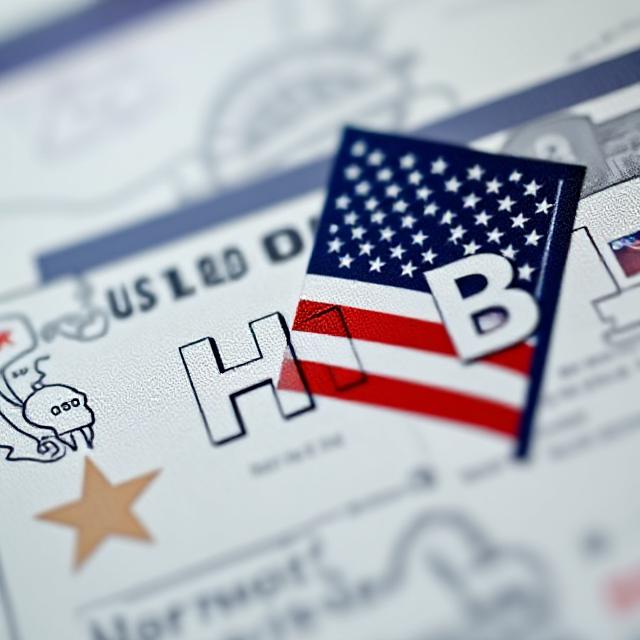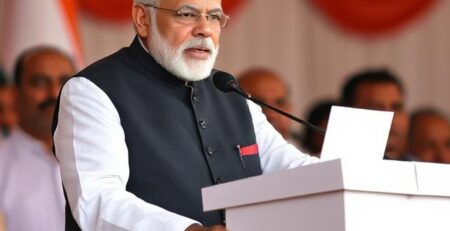US H1B Visa Fee Hike to $100,000: Impact on Indian Tech Workers and Global Talent Mobility
Introduction: A Shocking Move in US Immigration Policy
The United States recently announced a drastic fee hike for H1B visas, raising the petition fee to $100,000. This landmark policy shift has rattled the global technology and business community, particularly in India — the largest beneficiary of the H1B visa program.
While the Trump administration has framed this as a protective measure for American jobs and to fund domestic immigration services, critics argue that this could have humanitarian consequences, talent drain risks, and economic implications for both the US and India.
This article breaks down the policy, its background, its impact on Indian IT professionals, and the broader consequences for global talent mobility.
What is the H1B Visa and Why is it Important?
The H1B visa is a non-immigrant visa that allows US companies to employ foreign workers in specialty occupations such as technology, finance, engineering, healthcare, and research.
- Annually, about 85,000 H1B visas are issued through a lottery system.
- Nearly 70% of these visas go to Indian workers, primarily in the IT and tech services sector.
- Major Indian companies like Infosys, Wipro, TCS, HCL, Tech Mahindra, and US tech giants like Google, Microsoft, Amazon, and Meta rely heavily on H1B professionals.
Without this talent pipeline, the US would struggle to fill gaps in STEM (Science, Technology, Engineering, Mathematics) sectors.
What Does the $100,000 H1B Visa Fee Hike Mean?
According to the Indian Express and The Hindu, the US government announced a one-time $100,000 petition fee for new H1B visas.
Key clarifications:
- ✅ Not an annual fee – It’s a one-time charge per petition.
- ✅ Applies only to new visas – Not for renewals or current visa holders.
- ✅ No impact on re-entry – Existing H1B holders can leave/re-enter as usual.
- ✅ Applies from the next lottery cycle – Likely to take effect from FY 2026 (lottery opens in 2025).
In other words, if an Indian IT firm applies for 1,000 H1B petitions, the cost shoots up from a few thousand dollars to $100 million in fees alone.
Why Did the US Raise the Fee So Drastically?
The US administration has cited three reasons:
- Protect American Jobs – Discourage mass outsourcing by raising the cost for foreign workers.
- Fund Immigration System – Use the collected fees to strengthen USCIS (US Citizenship and Immigration Services).
- Political Pressure – Rising unemployment and election-driven rhetoric often target foreign workers as competitors to US citizens.
But industry experts argue this will backfire by reducing competitiveness of US companies who rely on skilled immigrant labor.
How Will This Impact Indian IT Companies?
India accounts for over 70% of H1B allocations. Let’s consider the implications:
- Cost Burden: A company filing 5,000 petitions could now face $500 million in upfront costs.
- Selective Filings: IT giants will apply only for highly specialized roles.
- Shift to Nearshoring: Indian firms may expand in Canada, Mexico, and Europe to bypass US restrictions.
- Remote Work Expansion: With AI and collaboration tools, many roles may remain offshore in India rather than moving to the US.
Will Indian Professionals Still Go to the US?
For many Indian tech workers, the American Dream is tied to the H1B visa. Higher fees borne by companies may not directly affect individuals, but they could reduce opportunities.
- Fewer filings → fewer approvals
- Stricter screening → higher competition
- Long-term uncertainty → brain drain to other countries (Canada, UK, Australia, UAE)
Are Dividends of H1B Still Worth It for Indian Workers?
Just like dividends in finance (where taxes reduce net returns), H1B is becoming less attractive due to policy uncertainty.
For an Indian worker:
- 2010s: High chance of long-term US residency & Green Card pathway.
- 2025: Expensive, fewer slots, long waiting period, no guarantee of permanent residency.
Thus, many are asking: Is the H1B still worth it in 2025?
Broader Economic Impact
1. Impact on US Tech Sector
- Silicon Valley thrives on global talent.
- Startups may struggle to afford H1B petitions.
- Talent shortage could slow innovation.
2. Impact on Indian Economy
- IT exports to the US (~$150 billion annually) may shrink.
- India may push for remote work-based service exports.
- Brain drain may shift toward Europe & Middle East.
3. Impact on Global Talent Mobility
- Canada, UK, Australia already have friendlier immigration pathways.
- The US may lose its position as the top destination for skilled workers.
Comparative Case: How Does This Fee Compare Globally?
- Canada: Processing fee ~CAD 1,000 (~₹60,000)
- UK Skilled Worker Visa: £719 (~₹75,000)
- Australia Temporary Skill Shortage Visa: AUD 3,000 (~₹1.6 lakh)
- US (New Policy): $100,000 (~₹83 lakh)
Clearly, the US is making H1B costlier by over 100x compared to competitors.
India’s Response to the Fee Hike
The Indian government has officially warned of humanitarian consequences.
- Families planning to migrate may face shattered dreams.
- Workers who rely on mobility for career growth may be stuck.
- Diplomatic talks are expected in the upcoming India-US trade dialogues.
Future of H1B: What Can Be Expected?
- Lobbying from US Tech Giants: Google, Microsoft, Amazon may push back against this policy.
- Possible Modifications: Fee may be lowered for small businesses/startups.
- Indian IT Strategy Shift: Stronger investment in remote delivery models, AI-driven outsourcing, and European expansion.
Key Stocks and Sectors Impacted
- Indian IT stocks: Infosys, TCS, Wipro, HCL may face pressure.
- US Tech majors: Hiring costs rise; could affect profitability.
- Recruitment firms & visa consultancies: Drastic business model changes.
Questionnaire-Style Subheadings
Q1: Is the H1B Visa Fee Hike to $100,000 permanent?
👉 It is expected to be permanent unless reversed by future legislation or lawsuits.
Q2: Will current H1B visa holders be affected?
👉 No, this applies only to new petitions, not existing holders or renewals.
Q3: Does this mean fewer Indians will work in the US?
👉 Yes, opportunities may shrink as companies file fewer petitions.
Q4: Could this lead to higher salaries for American workers?
👉 Possibly in the short term, but long-term talent shortages may hurt innovation.
Q5: Is Canada now a better option than the US for tech professionals?
👉 For many, yes — Canada offers easier pathways to residency.
Q6: Can companies pass the fee to employees?
👉 Legally, employers must bear the H1B petition cost; it cannot be transferred to employees.
Q7: Will this policy withstand global business pressure?
👉 Uncertain. Historically, business lobbying has rolled back harsh visa policies.
Conclusion: A Defining Moment for Global Tech Mobility
The US H1B Visa Fee Hike to $100,000 is not just a policy tweak; it’s a paradigm shift in global workforce strategy.
For Indian IT workers, it raises difficult questions about the value of pursuing opportunities in the US. For companies, it’s a call to rethink hiring strategies, invest in remote delivery, and explore alternative markets.
Ultimately, this could mark the beginning of a talent realignment, where the US no longer remains the default dream destination for skilled professionals.












